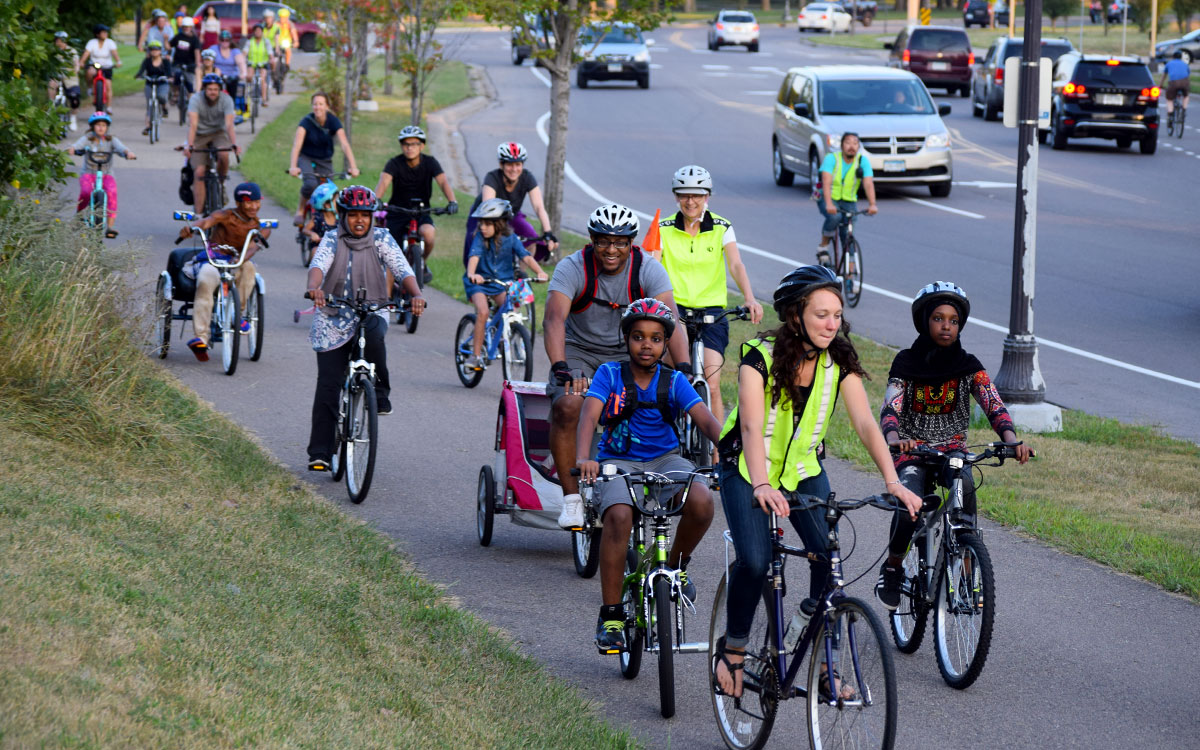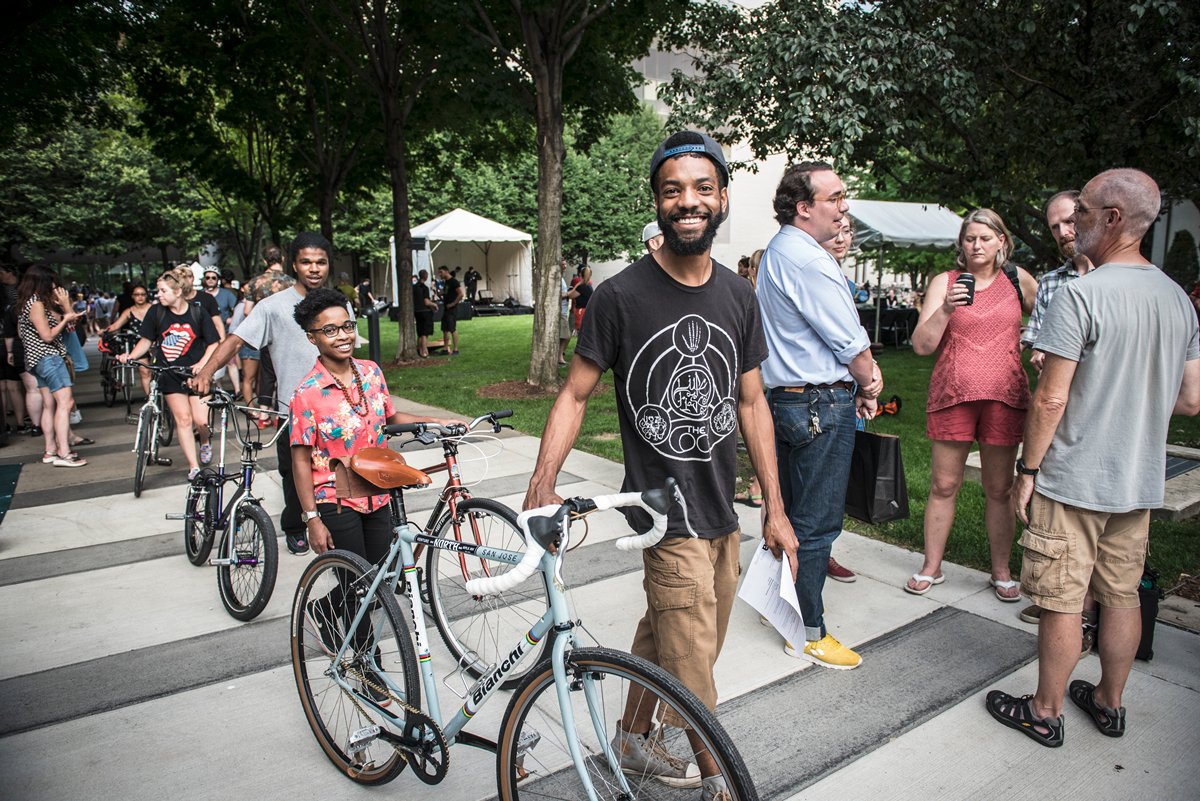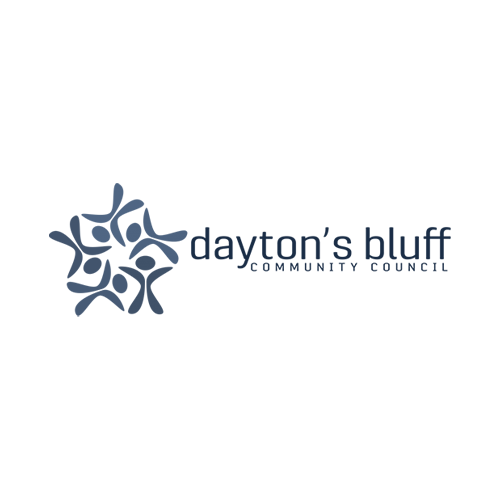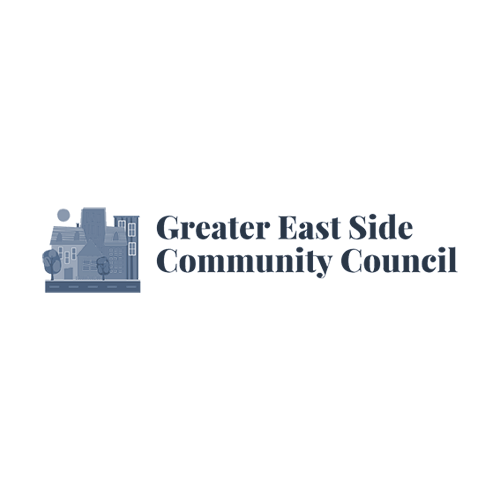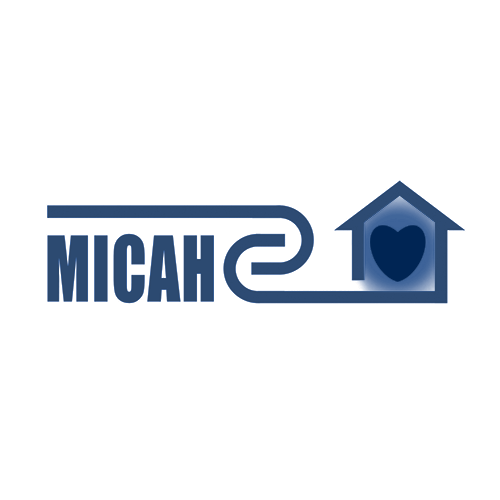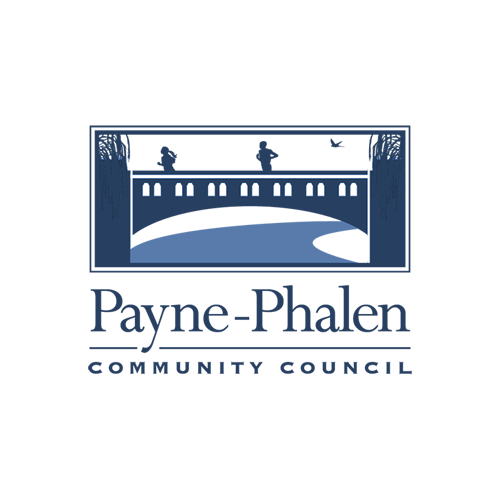Minnesotans can be proud to live in a state where lawmakers and advocates work together to advance groundbreaking policies to protect our climate and boost public transit.
Building on a decade of powerful advocacy and relationship-building at the State Capitol, Move Minnesota worked directly with elected transit champions last year to write a nation-leading policy that will shift the type of roads we build and the way our communities develop to secure a safer climate future. Minnesota legislators passed the law in 2023—adding to our landmark victories for transit and climate justice in Minnesota’s historic transportation bill.
This legislative session, we’ve been continuing our work with state lawmakers to ensure this innovative policy delivers the impact we need for our families and our future.
A Model for the Nation
Instead of endlessly expanding highways that divide our communities and pollute our air, more Minnesotans will be able to enjoy safe biking and walking connections or take fast, reliable public transit—thanks to the groundbreaking climate law secured by the advocacy of Move Minnesota and Move Minnesota Action in 2023.
For the very first time, this policy requires the state and region to turn Minnesota’s established climate goals into action on transportation projects and land use plans in ways that reduce driving and greenhouse gas pollution. While Colorado made headlines as the first state to adopt a similar measure, Move Minnesota leveraged connections with advocates and experts nationwide to carefully craft a measure that goes beyond that initial policy to create a new blueprint for states across the country.
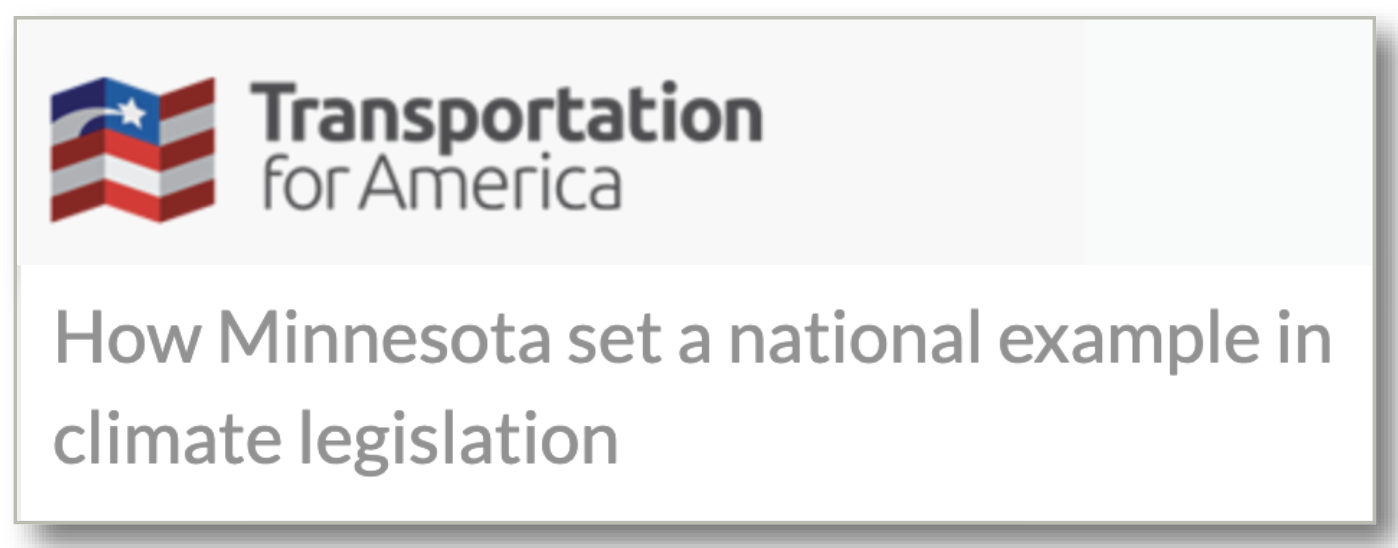
Reducing Driving and Climate Pollution
Vehicle transportation is the largest source of climate pollution. But changing that isn’t simply about individual choices—it’s about shifting the systems that make us dependent on cars. For generations, highways and car-centric urban planning have fueled the climate crisis and created deep racial inequities in our communities. Thanks to years of advocacy, Move Minnesota Action played a central role in drafting, advancing, and securing the votes for the cutting-edge policy that will help set Minnesota on a new path.
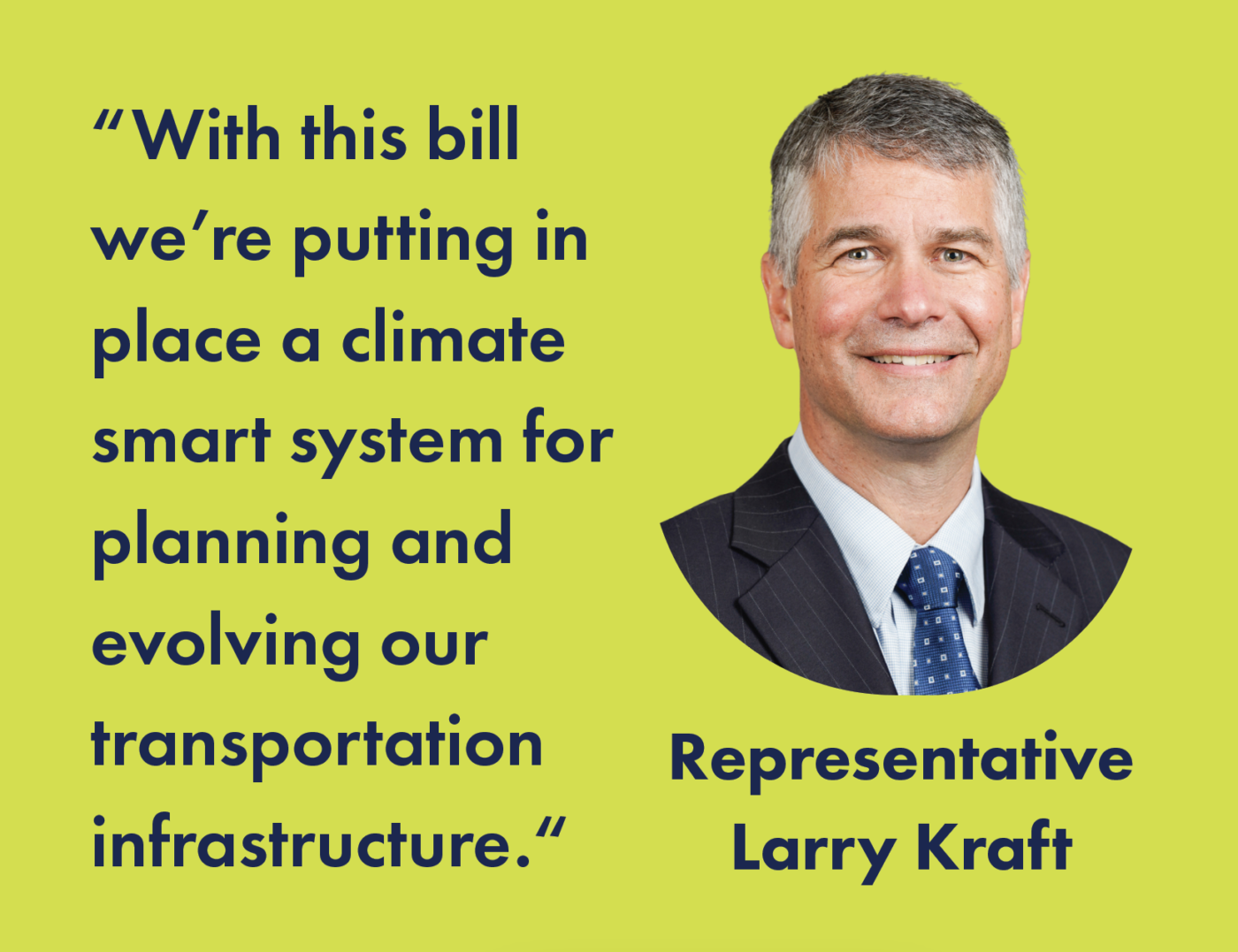
The policy reduces climate pollution by:
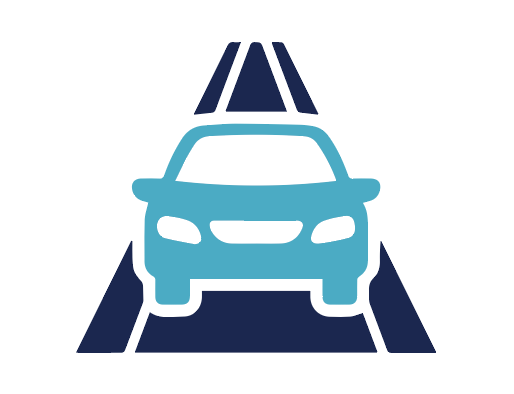
Curbing highway expansion
The Minnesota Department of Transportation must now assess the climate impacts of new highway expansion projects and, if a project adds pollution, the agency must find ways to reduce or offset that pollution with transportation projects that give our communities more and better options to bike, walk, roll, and use public transit. These multimodal investments must benefit the communities experiencing harm, or historically disadvantaged communities, when possible. They must also ensure that new highway expansion projects support the state’s goal to reduce the number of miles Minnesotans travel in their cars.
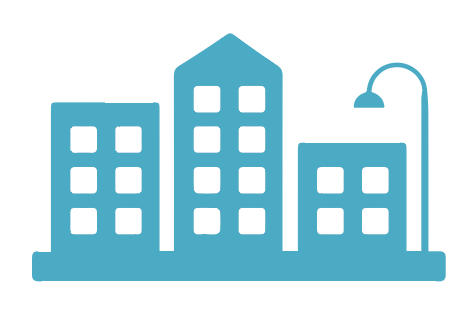
Connecting urban planning to climate goals
The Metropolitan Council—the Twin Cities’ regional planning organization—must now adopt land use and development guidelines that require more than 180 cities to stop engineering our lives around cars, and make sure the way our communities grow meets our state climate protection and driving reduction goals.
Why It Matters to Minnesotans
“As someone deeply concerned about the climate crisis, I’ve made driving a last resort—the bus is a big part of my daily transportation.” Barbara N.
“I’m young enough that I’m going to have to live in the climate-change-fueled future that we are creating right now with car dependency.” Amethyst O.
“Transit is safer than driving, and it’s better for the air and the earth. More people taking transit means a better chance we can begin to reverse the climate crisis.” Karl S.

Economic Savings
Analysis from RMI found that meeting Minnesota’s goal to reduce driving would result in an average annual benefit of $3.4 billion in collective economic savings for Minnesota families—and meeting our state’s climate action goals could prevent $82 billion in damages to industries ranging from agriculture to real estate.
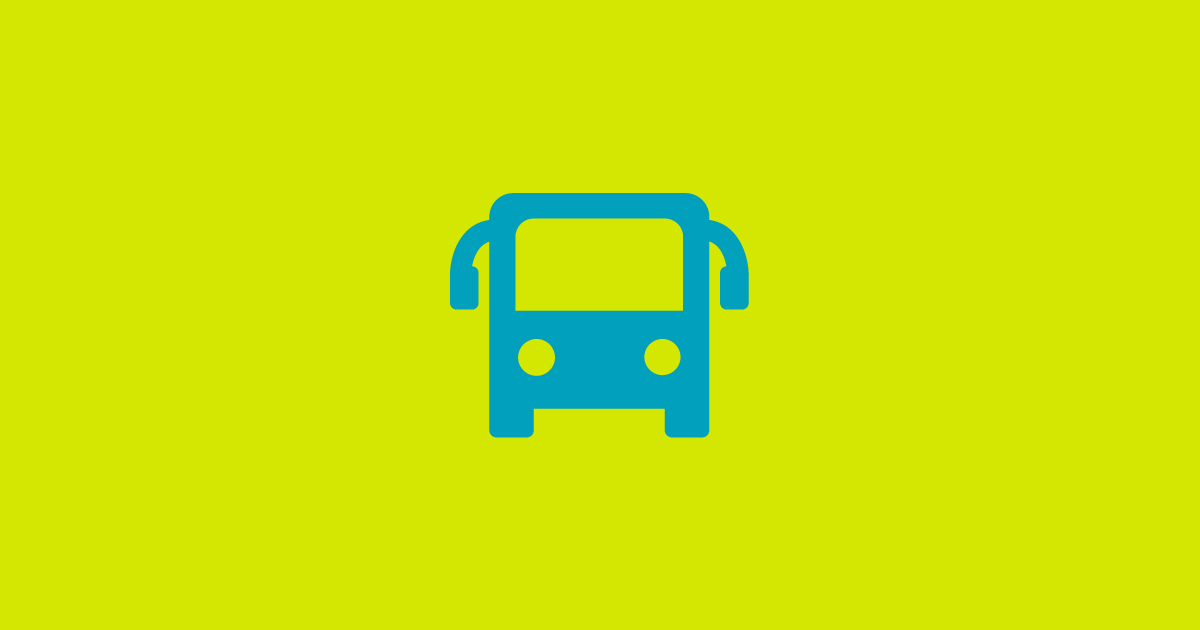
Public Support
Minnesotans want healthy, affordable, and sustainable ways to get around—and they support policies that redirect resources to make it happen. A recent statewide poll from Move Minnesota found that 66% of respondents support improving transportation options by “using funding from the state and federal government which would otherwise go to highway expansion.”
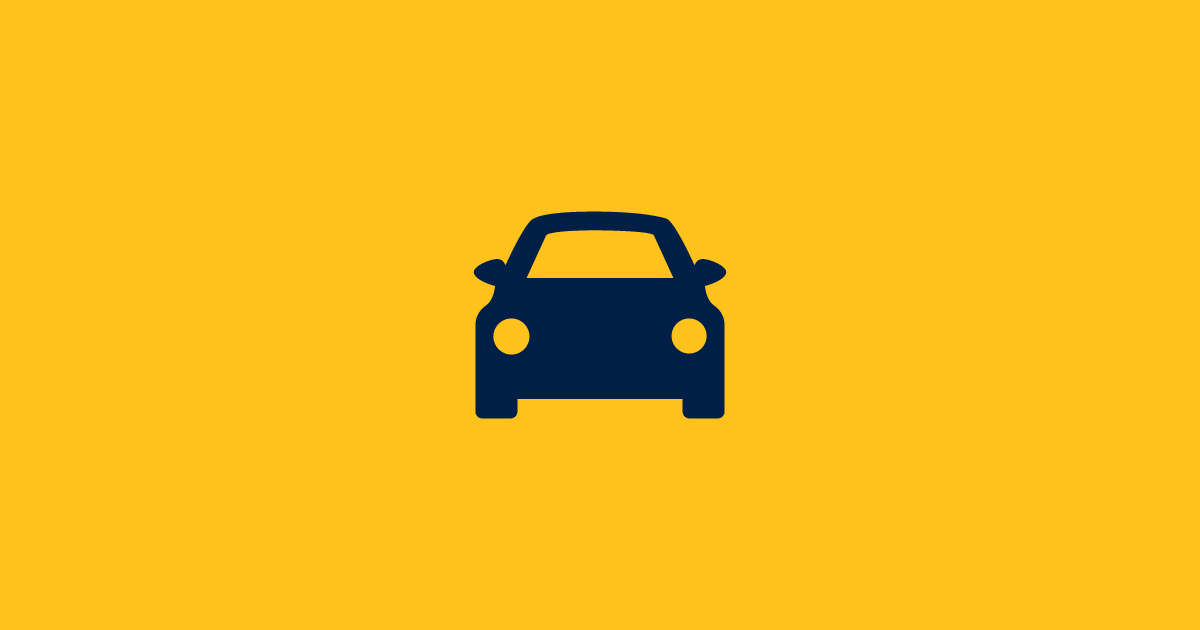
Climate Impact
As of 2024, Colorado is the only other state that has passed a similar policy. The state estimates the new planning process will help it avoid 1.5 million tons of greenhouse gas pollution by 2030—equivalent to taking 300,000 gas-powered cars off the road for a year.
From Passage to Implementation
In 2024, Move Minnesota, partners and legislative champions are working to make sure this law delivers the impact we need for our families and our future. In the months since the law’s passage, diverse experts and stakeholders, including Move Minnesota, carefully considered a process for assessing and mitigating the greenhouse gas (GHG) emissions and vehicle miles traveled (VMT) impacts of increasing capacity on the state’s trunk highway system. These insights and recommendations led to current efforts to:
- Ensure smooth and effective implementation of this critical climate measure
- Expand the law to all major highway projects, not just new highway expansion
- And provide the funding flexibility necessary for state and local governments to shift highway dollars to transit, biking, walking, and rolling projects to offset emissions
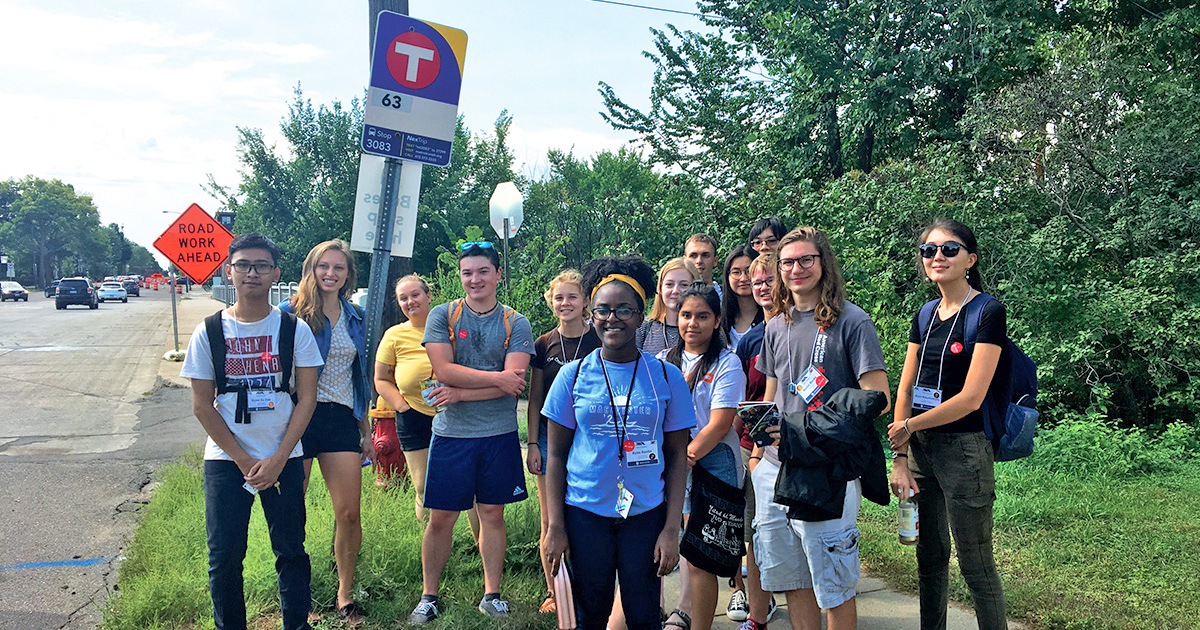
A New Legacy for Minnesotans
Climate change threatens the people and places we love, and our success in Minnesota is a strong reminder that solutions for a sustainable future are still readily available. By directly addressing climate pollution from transportation and land use, and pushing for policy change that will make it easier for people to walk, roll, bike, or bus, Move Minnesota and Move Minnesota Action helped our state set a new example for climate action nationwide. With this new law in place, instead of sprawling development and isolated neighborhoods, our region will have more housing and businesses in places that are easily accessible and close to one another. Instead of continuing to stoke the climate crisis, Minnesotans will be healthier and more connected, traveling together toward a future where everyone can thrive.
Thank you to our local and national partners, elected allies, and advocates for working alongside us to drive change that benefits our communities now and for the next generation!
Protected bikeways and bike paths are essential for safe, welcoming biking in Saint Paul. This week, the Saint Paul City Council unanimously passed an updated Saint Paul Bike Plan that proposes expanding more than 100 miles of protected bikeways and paths across the city! The updated plan will guide bike infrastructure in Saint Paul over the next 15 years.
Thank you to advocates and city council members for getting this passed and to city staff for your work on this important update!
Making Saint Paul a Better Place to Bike
We all deserve streets and trails that will let us enjoy the ride and get home safely. Growing the network of separated bikeways and bike paths is a win-win for all of us in Saint Paul, whether we bike or drive or care about someone who does:
- 🚲 Protected bikeways and bike paths keep people on bikes separated from car traffic, reducing the risk of dangerous crashes. They are proven to improve safety.
- 🚲 Protected bikeways and bike paths are proven to encourage more biking, and make biking more comfortable and accessible to people of all ages and abilities.
- 🚲 More people biking is good for the air we breathe and the climate we all share, improves community health, and reduces car traffic in our neighborhoods.
Way to go, Saint Paul! At Move Minnesota, we are cheering the updated Bike Plan and can’t wait to see it put into action with more separated bikeways and bike paths citywide!
Get Rolling in Our Bike-Friendly City
This spring and summer is a great time to enjoy and explore Saint Paul by bike. Saint Paul already has over 180 miles of bike-friendly routes that connect local neighborhoods and key destinations. Committed to encouraging bicycle use as part of everyday life, the City continues to add new bike lanes, paths, and protected bikeways for more people to use and enjoy. The updated Saint Paul Bike Plan builds on that existing progress and reflects commitments to reducing driving rates in the City’s Climate Action Plan.
Join Move Minnesota for local group bike rides happening now through August! Sign up for our Bike Month Rides to get rolling in May and visit our events calendar to check out our full 2024 Saint Paul Bike Rides Series.
Questions? Email Theresa Nelson at theresan@movemn.org
Join our Saint Paul Volunteer Team to make positive changes around transit, walking, biking, and rolling in your city! Move Minnesota staff and volunteers meet up monthly to strategize, organize, socialize, and take action together. RSVP for our July 9 meeting to get involved.
This Saint Paul-area volunteer group typically meets on the first Tuesday of every month from 6:00-7:00 PM to work on city-specific actions. In July, we are meeting on the second Tuesday instead, due to the holiday.
If you have any questions, please email Senior Community Organizer Julie Johnson at juliej@movemn.org.
Join our Saint Paul Volunteer Team to make positive changes around transit, walking, biking, and rolling in your city! Move Minnesota staff and volunteers meet up monthly to strategize, organize, socialize, and take action together. RSVP for our June 4 meeting to get involved.
This Saint Paul-area volunteer group typically meets on the first Tuesday of every month from 6:00-7:00 PM to work on city-specific actions.
If you have any questions, please email Senior Community Organizer Julie Johnson at juliej@movemn.org.
Join our Minneapolis Volunteer Team to make positive changes around transit, walking, biking, and rolling in your city! Move Minnesota staff and volunteers meet up monthly to strategize, organize, socialize, and take action together. RSVP for our July 16 meeting to get involved.
This Minneapolis-area volunteer group typically meets on the third Tuesday of every month from 6:45-7:45 PM to work on city-specific actions.
If you have any questions, please email Senior Community Organizer Julie Johnson at juliej@movemn.org.
Join our Minneapolis Volunteer Team to make positive changes around transit, walking, biking, and rolling in your city! Move Minnesota staff and volunteers meet up monthly to strategize, organize, socialize, and take action together. RSVP for our June 18 meeting to get involved.
This Minneapolis-area volunteer group typically meets on the third Tuesday of every month from 6:45-7:45 PM to work on city-specific actions.
If you have any questions, please email Senior Community Organizer Julie Johnson at juliej@movemn.org.
Stop by Move Minnesota’s table at the Minneapolis Institute of Art Bike Night on June 6 to learn about Move Minnesota’s Livable Lyndale campaign, take action, and hear from our Minneapolis Volunteer Team!
If you have any questions, please email Senior Community Organizer Julie Johnson at juliej@movemn.org.
Photo courtesy of Mia.
Stop by Move Minnesota’s table at the Minneapolis Institute of Art Bike Night on May 16 or on June 6 to learn about Move Minnesota’s Livable Lyndale campaign, take action, and hear from our Minneapolis Volunteer Team!
If you have any questions, please email Senior Community Organizer Julie Johnson at juliej@movemn.org.
Photo courtesy of Mia.
Key Initiative
Purple Line for the People
The new METRO Purple Line should serve as many people as possible, as well as possible. Move Minnesota is working with local partners and volunteers to support a new route that could bring this exciting bus rapid transit project to White Bear Ave instead of Bruce Vento Trail and push for stations where our communities need them. Join us to get involved!
Take action now to show your support!
The Issue
The METRO Purple Line is bringing fast, frequent bus rapid transit service to the East Metro—but we need to make sure Metro Transit puts the route and the station locations where they will do the most good! For a long time, the Purple Line route was planned along Bruce Vento Regional Trail, a scenic bicycling and walking path spanning from the Bruce Vento Nature Sanctuary in Saint Paul into the eastern suburbs. Now, Purple Line planners are considering White Bear Avenue as an exciting new alternative, but the final route is not yet decided.
The Solution
Choosing White Bear Avenue for the Purple Line’s route will connect more people to high-quality transit service and bring new energy, prosperity, and access to local businesses, services, and jobs. Combining this new route with well-placed stations that meet community needs will benefit residents and our region as a whole.
White Bear Avenue is a crucial corridor on the East Side of Saint Paul and Maplewood where community members work, eat, live, and play. Public transit makes sense here. Not only is White Bear Avenue dense with businesses and community infrastructure, but it also serves as an important connection for the historically underserved and growing East Side of Saint Paul to the rest of the city!
Why It Matters
Everyone deserves to have easy, accessible, and affordable transportation options. Many families in the East Metro rely on public transit to get to work and school, see families and friends, and access essentials like employment, groceries, and health care. The METRO Purple Line will improve our daily lives and make our communities more connected—if decision-makers put the route and stations where they can serve people best.

Our metro communities need a Purple Line that serves as many people as possible, as well as possible.
Together, let’s make it happen!
Our Objective
We’re urging project planners and decision-makers to put the Purple Line where the people are!
From Saint Paul and Maplewood, to Vadnais Heights and White Bear Lake, we all care about creating a better future for our families and communities in the East Metro. We need fast, frequent transit that serves our community in the best way possible, in the densest area available. That’s why our coalition is calling on decision-makers to build the Purple Line on White Bear Avenue.
GET INVOLVED!
Join Our Local Volunteer Team
We need your help to get a Purple Line for the people!
Advocating for the Purple Line route on White Bear Avenue is a top priority for our Saint Paul volunteer Team. We know that when we come together, we can make our cities even better places to live, to get around, and to enjoy!
Let’s put this corridor where it always should have been: Along a thoroughfare that will benefit business owners, transit users, and people who don’t want to be tied down to car ownership. Let’s put it on White Bear Ave!
Sherry J.
Saint Paul resident
Take action!
Push for the Purple Line on White Bear Ave
Decision-makers need to know there is strong local support for this route. Sign on today to show your support!
Related News & Updates
-
Minneapolis Volunteer Team Launches — and Leads — Livable Lyndale Campaign!
We launched our Minneapolis and Saint Paul Volunteer Teams so community members could set the agenda and identify campaign and policy priorities in the cities they care about. That’s how the Livable Lyndale campaign was born!
-
New Poll Shows Minnesotans Want a Transportation System That Works for Everyone
A new poll shows a resounding majority of Minnesotans want a different approach. They want to drive less and want to use transit more — and they overwhelmingly support shifting money from highway investments to other modes. This report examines the key findings of this statewide poll and recommends three actions.
-
Bus Lanes and Signal Priority for Better, Faster Transit in the Twin Cities
Bus lanes and signal priority can significantly speed up transit trips. Bus riders shouldn’t have to wait years for progress to come one new line at a time—we need system-wide improvements now.
Explore Other Initiatives
We’re building coalitions, engaging communities, organizing with
advocates, and more.
-
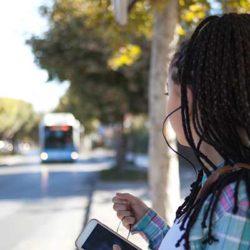
Boost the Bus Campaign
The Twin Cities needs faster, better bus rides for more people. We are advocating for simple solutions with the power to make a big impact.
-
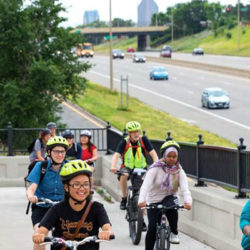
Rethinking I-94
Move Minnesota is advocating for walking, biking, and transit solutions that put community first when I-94 is reconstructed.
-
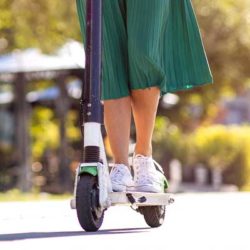
Choose How You Move
At Move Minnesota, we love inspiring more people to bus, bike, walk, and roll! Let us help you get started.

